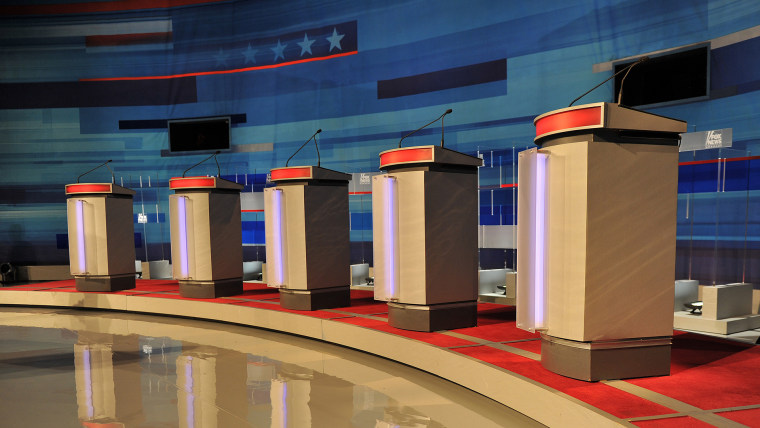By most measures, the Republican Party's presidential field in the 2016 cycle was the largest ever: 17 GOP candidates vied for their party's nomination, nearly enough to field two full baseball teams.
It didn't take long for that record to be broken.
As of this morning, there are 18 Democratic presidential candidates with at least some experience in public office. If we include Andrew Yang and Marianne Williamson, there are 20 candidates. What's more, with a handful of other Dems eyeing the race -- Stacey Abrams, Michael Bennet, Bill de Blasio, et al -- the largest primary field in major-party history may yet reach new heights.
It's worth asking why.
Donald Trump is seen as vulnerable. If there were an incumbent Republican president with a 65% approval rating, it's a safe bet far fewer Democrats would launch candidacies. This isn't to say Trump is certain to lose, but his weak public standing encourages competitors.
Trump effectively lowered the eligibility bar. It's part of the American ethos: anyone can grow up to be president. In 2016, voters showed the world just how literally true that is when 63 million people voted for a television personality with no background in public service and no real interest in public policy. The takeaway for ambitious politicians couldn't have been clearer: a big chunk of the electorate will vote for anyone, without the slightest regard for qualifications or even the ability to speak in complete sentences.
There's no obvious frontrunner scaring away potential rivals. As things stand, polls point to Joe Biden and Bernie Sanders as the top contenders for the Democratic nomination, and while it's easy to make the case that either one of them will prevail, neither one is in a commanding position. When there's a prohibitive favorite, potential candidates stay on the sidelines. When there isn't, they jump in.
Arithmetic. When there's a field this enormous, it gets easier for candidates to do well with a modest percentage of the overall vote. In other words, when the field has a handful of people, 10% support won't get a candidate very far. When there are 20 candidates, 10% support looks pretty impressive. It's amazing how many people consider their prospects, take the arithmetic into account, and say to themselves, "10% doesn't sound so hard. I can do that!"
There's no real downside. If a politician doesn't have to give up his or her current job to run for president, then there are no real incentives in place not to run. Presidential candidates, even if they don't expect to win, get a platform for their ideas and an opportunity to raise their profiles. Former presidential candidates often benefit from their mailing lists, speaking opportunities, television contracts, and the prospect of other powerful posts like cabinet slots.
There's some pent-up demand. Barack Obama ran as an incumbent in 2012, and Hillary Clinton ran as something effectively an incumbent in 2016. For ambitious Democrats, that means there hasn't been a real opportunity to run for the presidential nomination in over a decade, and depending on what happens in 2020, there may not a similar opportunity until 2028.
Combine all of these factors and we're left with a group of Democratic presidential hopefuls large enough to field two baseball teams -- with relief pitchers.
